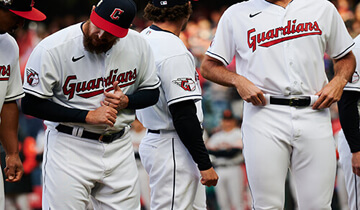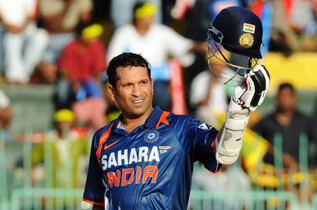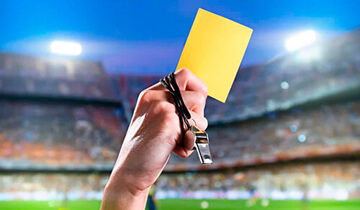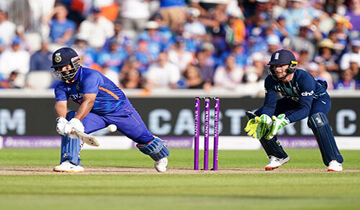A balk is an illegal act by the pitcher when runners are on base intended to deceive the baserunners. According to the Official Baseball Rules, a balk occurs when the pitcher makes any motion naturally associated with his pitch while not actually making a pitch.
Definition of a Balk
Specifically, a balk is called when:
-
The pitcher, while touching his plate, makes any motion naturally associated with his pitch and fails to make such delivery.
-
The pitcher, while touching his plate, feints a throw to first base and fails to complete the throw.
-
The pitcher, while touching his plate, fails to step directly toward a base before throwing to that base.
-
The pitcher delivers the ball to the batter while not facing the batter.
-
The pitcher makes an illegal pitch.
-
The pitcher delivers the ball to the batter while part of his free foot is on the rubber but not touching the pitcher’s plate.
-
The pitcher while touching his plate, accidentally drops the ball.
-
The pitcher, while giving an intentional base on balls, pitches when the catcher is not in the catcher’s box.
Effect of a Balk
The effect of a balk being called by the umpire depends on the situation:
-
With runners on base, each runner is awarded one base without liability to be put out.
-
With no runners on base, a ball is ruled on the batter.
So in summary, a balk is an illegal act by the pitcher designed to deceive runners. It is called by the umpire when the pitcher makes a deceitful movement on the mound and does not deliver the pitch. When called, all runners on base advance one base automatically.
The Balk: Baseball’s Trickiest Rule
Overview of the Balk Rule
The balk is one of baseball’s most confusing and controversial rules. It is called when a pitcher makes an illegal motion during his delivery to home plate, intending to deceive the baserunners. Determining what constitutes a balk has frustrated players, coaches, umpires and fans for over 100 years. The balk rule aims to protect batters from unfair deceit by the pitcher, but remains one of baseball’s least understood regulations.
Origins of the Balk Rule
The balk rule was instituted in 1898. Prior to that, pitchers could legally make feints and abrupt starts and stops in their delivery to confuse batters and runners. The new rule banned these deceptive tactics, requiring pitchers to come to a complete stop before throwing home. Over time, more specific pitcher motions were deemed illegal balks as well.
Main Types of Balks
Starting and Stopping Delivery
Once a pitcher begins his motion towards home plate, he must complete the delivery or risk a balk call. Stopping mid-windup is prohibited unless reacting to an external distraction.
Faking a Throw to a Base
Pitchers can feint throws to bases to try to pick off runners, but cannot pump or snap their shoulders without actually making a throw. This incomplete throwing motion is an illegal balk.
Not Stepping Toward a Base
Pitchers must step directly toward a base before throwing there. Turning or spinning off the rubber prior to stepping towards the base constitutes a balk.
Quick Pitching
The pitcher cannot deliver the pitch until the batter has time to get set in the box. Even with no runners on base, there must be a one second pause between pitches.
Not Pausing in Set Position
From the set position, pitchers must come to a complete stop for at least one second before starting their delivery. Failure to pause is an automatic balk.
Separating Hands During Set
After setting their hands together, pitchers cannot separate them before starting the pitch. Any drifting of the hands apart while setting is a balk.
Dropping the Ball
If a pitcher drops the ball while on the rubber, a balk is immediately called. The pitcher must maintain control of the ball while on the mound.
The Ongoing Balk Controversy
Over 100 years later, the balk remains one of baseball’s most misunderstood and controversial rules. The complexity continues to frustrate players, coaches and fans alike. However, the rule persists in the name of maintaining fairness and preventing pitcher deception.
The Balk: Baseball’s Most Confusing Call : What Constitutes a Balk
Illegal Motions
The official rules list more than half a dozen actions that could result in a balk being called, from failing to come to a complete stop during a stretch to making a quick pitch without allowing the batter to get set in the box. The nuances of what is and isn’t allowed mid-windup are complex and even many veteran players and fans don’t fully understand them.
Judgment Calls
Umpires are tasked with making this judgment call in real time, adding to the trouble. Given the speed of MLB pitches, it’s reasonable that not every infraction will be caught. Pitchers often get away with small mistakes. But when a balk is called, especially at a critical moment, it can be infuriating for players and managers who feel the call was incorrect.
Consequences of a Balk
Since it results in a dead ball, any pitch thrown is voided, even if the batter puts it in play. Runners on base at the time are all awarded an automatic one base advance. So if the bases were loaded, a balk would drive in a run. Needless to say, this can drastically impact a game.
Calls for Change
MLB has made some minor tweaks to balk rules over the years in attempts to add clarity. However, the basic framework has remained in place for decades. There have been calls to simplify or even eliminate balk rules entirely, but baseball has been reluctant to make major changes to this integral, if misunderstood, part of the game.
A Constant Concern
For pitchers, the threat of a balk is a constant concern. Fans are left hoping questionable calls don’t affect crucial games. And umpires must make split-second decisions knowing many will criticize their judgement. The balk may frustrate all involved, but it remains a core element of baseball’s unique set of quirks and intricacies.
Avoiding Balks : Establish a Consistent Routine
Practice the Same Timing and Motion
Pitchers need to establish a rhythmic and repeatable routine on the mound when pitching out of the stretch. This includes when to look at runners on base, how to come set, and having the same leg kick and delivery. By repeating the same cadence and timing, pitchers are less likely to make an illegal motion that crosses up their normal pitching delivery. Practicing a set routine in bullpen sessions is important to commit it to muscle memory.
Use the Same Ritual Between Pitches
Having a detailed routine between pitches can help pitchers repeat their mechanics and avoid rushing. This can include how they receive the ball from the catcher, glance at baserunners, grip the ball, and step on the rubber. Standardizing the process between each pitch will lead to consistency.
Properly Step Off the Rubber
Disengage the Rubber with the Pivot Foot
Before attempting a throw over to a base or faking a pickoff move, pitchers must completely disengage the rubber. This means stepping backwards off the pitching rubber with their pivot foot first. The foot must clearly leave contact with the rubber before making any moves towards a base. After stepping off, the pitcher can throw or fake a throw to any base.
Step Off Cleanly Before Any Movements
Pitchers cannot make any motions towards a pickoff until their pivot foot has left the rubber. A beanball pitch or flinching before stepping off can still be called a balk. Keep the disengagement crisp before making pickoff attempts.
Come Set Before Pitching
Stop Completely in the Set Position
Pitchers must come to a complete stop in the set position before beginning their pitching delivery. This means stopping for at least one second with hands together and feet stationary. No pitching motions can begin until fully set. Coming set with a consistent rhythm can help avoid rushing and making multiple movements.
Hands Together and Feet Planted
To be deemed properly set, pitchers must have their hands together and feet firmly on the ground. Glove and throwing hands should be touching and feet cannot be moving or bouncing. This pause demonstrates control before starting the pitch.
Keep Hands Together When Set
No Separating Until the Pitching Motion
After coming set, pitchers must keep their hands together until separating them as part of the pitch delivery. Any illegal motions such as swinging the glove hand towards second base can be called a balk. Keep the hands still and together until beginning the natural pitching motion.
Avoid Deceptive Movements
Pitchers cannot make any motion that looks like the start of a pitch before actually delivering the ball. These can include taking the hands apart, a glove flick, shoulder turn or bringing the leg up. Keep everything paused until committing to the full pitching movement.
Only Throw to Occupied Bases
Fakes and Throws Only to Runners
It can be tempting to try to deceive runners by faking throws to unoccupied bases. However, any step or throw towards a base without a runner will be called a balk. Pitchers can only make live ball throws or fakes to bases currently occupied by baserunners.
No Deceiving Unoccupied Bases
Even if not intended to deceive, throwovers or pickoff attempts to bases with no runners are prohibited. Pitchers must clearly step off the rubber first, then can only make moves to bases with runners actually on them. Limit pickoff and hold moves to legitimate threats.
New Plan Seeks to Limit Balk Call Appeals: Background on Balk Rules
Definition of a Balk
A balk occurs when a pitcher makes an illegal motion on the mound that could deceive a base runner. This includes things like failing to come to a set position, making a quick pitch, or dropping the ball during the pitch.
Controversial Nature of Balk Calls
Balk calls are often controversial as the rules contain a lot of nuance. Determining a balk frequently relies on the umpire’s judgment of whether a deception occurred. Managers frequently appeal balk rulings.
Details of the Proposed Plan
Limits on Appeals and Challenges
The new rule would prohibit teams from using replay review or manager challenges to appeal balk calls. Umpires would have final authority on their initial balk ruling.
Umpire Discretion to Reverse Calls
While appeals would be limited, the plan allows umpires to reverse their own balk calls after consulting with other umpires. This retains a human element in enforcing the rules.
Perspectives on the Rule Change Proposal
Supporters Argue It Will Speed Up Games
Proponents believe the plan will reduce unnecessary delays from balk appeals, improving pace of play.
Opponents Worry About Accountability
Critics argue the inability to appeal judgement calls sets a bad precedent and reduces umpire accountability.
Let me know if you would like me to modify or expand on any part of the article outline.
Conclusion:
-
A balk is an illegal move by the pitcher that deceives runners, allowing them to advance one base without risk. Balks are called by the umpire.
-
There are numerous actions that can be considered balks, such as failing to come to a complete stop in the set position, making an illegal pitch motion, or dropping the ball during the pitch.
-
The intent behind the balk rule is to prevent pitchers from deceiving baserunners. It helps enforce standard pitching mechanics and routines.
-
Balk calls cannot be appealed. The umpire has sole judgment on determining if a balk occurred. Their ruling is final.
-
Pitchers should be careful to avoid balking. Common ways include not coming set before pitching, making unnecessary motions, and not having proper foot placement on the rubber.
-
A balk results in a ball being added to the count. If runners are on base, they are awarded one base from where they started.
-
Balks are uncommon in Major League Baseball. Most occur due to pitchers not coming set or throwing from the stretch improperly. Proper mechanics can prevent most balks.
-
While controversial at times, the balk rule has stood the test of time and is an important part of maintaining fairness and strategy in baseball.







































